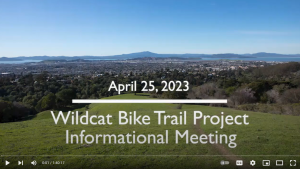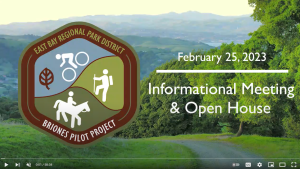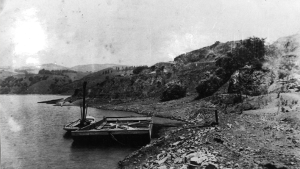The Lives and Legacies of California's Women Botanists
Part One: Botanical Pioneers
By David Edelson
Botanic Garden Monthly, March 2022 Newsletter and April 2022 Newsletter
Women have made enormous contributions to the identification, cultivation, conservation and study of California native plants, but, as in many fields, they have not always received due recognition. Here, in honor of Women's History Month, are the stories of some of the leading women in the history of botany in California, highlighting connections to the East Bay Regional Parks Botanic Garden and its collection. Many of these women were untrained, most paired their love of plants with strong and effective advocacy to conserve native plants and habitats, and all had to overcome social and economic barriers and gender stereotypes to make their contributions.

Rebecca Austin
Rebecca Austin (1832-1919) was an amateur botanist and naturalist with no formal training. She was born in Kentucky and moved to Plumas County in the northern Sierra with her family in 1865. She did pioneering research on the California pitcher plant (Darlingtonia californica), a rare carnivorous plant with limited distribution in northern California and southern Oregon, studying its natural history, methods of feeding, and the insects it captures; she called it "a mystery, full of life and death." There are several plants named after her, including Austin's milkvetch (Astragalus autiniae), phantom orchid (Cephalanthera austiniae), and Pacific hound's tongue, (Cynoglussum grande, aka C. austiniae). Her specimens are included in the collections of the Smithsonian Institution and the California Academy of Sciences.

Sara Plummer Lemmon
Sara Plummer Lemmon (1836-1923) was a self-trained botanist, born in Maine, who moved to Santa Barbara in 1871 and established a library that became a cultural and intellectual center. She met and married John Lemmon, another self-trained botanist, and together they undertook many botanical explorations and discoveries, especially in Arizona and California; Mount Lemmon in southern Arizona is named for her. She was a noted botanical illustrator and served as the official artist for the California State Board of Forestry. Beginning in the 1890s, she advocated for the adoption of the California poppy (Eschscholzia californica) as the state flower of California, an effort that succeeded in 1903. The Lemmons also co-developed the Lemmon Herbarium at their home in Oakland, which later became an important part of the Jepson Herbarium.

Katharine (Kate) Brandegee
Katharine (Kate) Brandegee (1844-1920) was born in Tennessee and moved to California with her family during the Gold Rush of 1849. Brandegee was the third woman ever to matriculate from medical school at UC Berkeley, where she studied medicinal plants and became interested in botany. She honed her skills as a botanist while traveling and collecting plants across California, Nevada, and Baja California, including walking from San Diego to San Francisco collecting plants as part of her honeymoon with her second husband, Townsend Brandegee, who was also a botanist. Kate Brandegee was hired as the first paid female curator at the California Academy of Sciences in 1883. She visited Alice Eastwood in Denver, where she inspected Eastwood's plant collection, and she was so impressed that she gave up her own salary at the Academy to hire Eastwood to assist with the Academy's herbarium. There are several plants named after the Brandegees, including Brandegee's clarkia (Clarkia biloba subsp. brandegeeae), a rare species endemic to the Sierra foothills, Brandegee's spring beauty (Claytonia saxosa), Greenhorn fritillary (Fritillaria brandegeei), a rare endemic from the southern Sierra foothills, and Brandegee's sage (Salvia brandegeei).

Alice Eastwood
Alice Eastwood (1859-1953) was one of California's preeminent botanists. She was born in Toronto and moved to Colorado as a teenager, where she began serious botanical explorations and toured Alfred Russel Wallace, the famous English naturalist, through the alpine gardens of the Rockies. She met Kate Brandegee on a botanical trip to California in 1891 and (though without formal botanical training) was soon hired as the botanical curator at the California Academy of Sciences, where she worked for over 50 years. The 1906 earthquake started a major fire at the Academy's headquarters in San Francisco; Eastwood heroically rescued over 1,200 botanical specimens from the building, climbing the railing along the destroyed staircase to the sixth floor, and lowering the specimens to the ground with string. Eastwood ultimately established a world-class botanical collection at the Academy and was renowned for her botanical explorations and discoveries in California. She was one of the first botanists to write about the positive ecological effects of fire, based on her research and experience at Mt. Tamalpais, which included discovering and naming several plants, such as Arctostaphylos canescens and A. glandulosa. Eastwood also served as president of the Tamalpais Conservation Club and worked successfully to protect Mt. Tam as a state park. Two genera (Eastwoodia and Aliciella) and many species are named for her, as well as a redwood grove near Redwood National Park and a campground at Mt. Tam. Eastwood was also a friend and mentor to other important women botanists, including Lester Rowntree and Ynes Mexia.

Blanche Trask
Blanche Trask (1865-1916) was born in Iowa and moved with her husband to California in 1890. She became an amateur botanist, poet and island explorer who lived on Santa Catalina Island from 1893-1912; she made extensive botanical collections from throughout the Channel Islands during that time. Famed botanist William Linn Jepson met her there and they corresponded extensively; about Trask, Jepson said: "For the islands as a whole, its rocks, cliffs, and canyons, as well as its plants, trees, and shrubs this woman has a most remarkable love. It has grown out of her love for its wildness, its inaccessible cliffs, and its great solitudes of canyon, crest, and sky." Trask discovered Santa Barbara island dudleya (Dudleya traskiae) and several other species are named for her, including Catalina Island mountain mahogany (Cercocarpus traskiae), Island mountain mahogany (C. betuloides var. blancheae), and Trask's milkvetch (Astragalus traskiae), all of which are rare and endemic to the Channel Islands (and the nearby mainland of California). Lester Rowntree said, "Cercocarpus traskiae immediately brings to mind the wind-blown slopes and sheltered cañons of the Santa Barbara Channel Islands where Mrs. Trask went plant exploring."

Ynes Mexia
Ynes Mexia (1870-1938) was the first prominent Mexican American woman botanist. Born in Washington D.C., she spent nearly 30 years ranching in Mexico before moving to California and enrolling at UC Berkeley to study botany at the age of 51, where she established a friendship with Alice Eastwood. Strongly independent, she traveled extensively throughout the Amazon, Alaska, California, and Mexico (often alone or with indigenous guides); "I don't think there is any place in the world where a woman can't venture,” she once said. During her lifetime, she collected some 150,000 specimens, many of which were described as new species. She was the first botanist to collect in Denali National Park, and a large collection of her specimens, photographs and slides is held at the California Academy of Sciences. A genus (Mexianthus) and around 50 species (e.g., Castilleja mexiae, from Alaska) are named for her. Mexia was an ardent conservationist, and as an early member of the Sierra Club and Save the Redwoods League she played an important role in the conservation of coast redwoods (Sequoia sempervirens) at Montgomery Woods and elsewhere.

Lester Rowntree
Lester Rowntree (1879-1979) was born in England, moving with her family to the United States and ultimately to California in 1891. A self-taught botanist with no formal education, she pioneered the study and propagation of California native plants for the garden. She started her career as a naturalist in her 50s, after a divorce. She wrote, “It took adversity to bring me the sort of life I had always longed for. Not until my domestic happiness had gone to smash did I realize that I was free to trek up and down the long state of California, and to satisfy my insistent curiosity about plants.…” When San Francisco announced that it would develop the Laurel Hill Cemetery (where Alice Eastwood had discovered the rare Franciscan manzanita (Arctostaphylos franciscana, aka A. hookeri subsp. franciscana and A. montana subsp. franciscana), Rowntree famously rescued the shrub and planted it in her garden in Carmel, explaining to her friend and colleague Jim Roof that “I garnered it ghoulishly in a gunnysack.” According to her grandchildren, “Lester and Jim Roof were not only horticultural colleagues, but also good personal friends, who fueled each other’s curmudgeonly traits. At Lester’s ninetieth birthday celebration, she and Roof turned their backs on the assembled guests and secluded themselves in the garden to chat alone for several hours, much to the chagrin of the host and hostess.” Rowntree was a prolific author of hundreds of magazine and journal articles and wrote several books for children, as well as two critically acclaimed books, Hardy Californians (1936) and Flowering Shrubs of California (1939). She received numerous honors, including Honorary Life President of the California Native Plant Society, and co-founded the California Horticultural Society with Alice Eastwood.

Mary Bowerman
Mary Bowerman (1908-2005) was born in Canada and moved with her family to England before settling in the Bay Area where she lived most of her life. She received her undergraduate degree and Ph.D. from UC Berkeley; her doctoral advisor was Willis Linn Jepson. She published the definitive flora of Mt Diablo in 1944 based upon her dissertation (since revised and reissued with Barbara Ertter in 2002); according to Ertter, Bowerman’s work “was trend-setting in its comprehensive approach to floristics, notably in the incorporation of ecological information.” She became an expert in fire ecology, having studied how plants at Mt. Diablo responded to wildfire. Bowerman’s research portrayed the ecological richness of Mt. Diablo, which played a role in the subsequent establishment and expansion of Mt. Diablo State Park. Bowerman was a fervent advocate for Mt. Diablo’s conservation; she was an original co-founder of the organization Save Mt. Diablo in 1971, and she played a major role in securing permanent protection of Mitchell, Back and Donner Canyons, North Peak and many other parts of the mountain. Bowerman said, “My dream is that the whole of Mt. Diablo, including its foothills, will remain open space – that the visual and natural integrity will be sustained.” In 1978 Jim Roof named in her honor the manzanita Arctostaphylos bowermaniae (since reclassified as a subspecies of A. manzanita), who said it was “intended to commemorate her great affection for and knowledge of the native plants of California which she has generously shared with her fellows along many pleasant trails.” The Mary Bowerman Trail near the summit of Mt. Diablo is named for her. In addition, she received many awards for her work, including a State of California Golden Bear award and the Daughters of the American Revolution’s National Conservation Medal.

Mary DeDecker
Mary DeDecker (1909-2000) was born in Oklahoma and lived her adult life in California. She was a self-taught botanist who became familiar with the natural history of the eastern Sierra through many extended camping trips with her family. She was ultimately known as the leading authority on the flora of the eastern Sierra and the northern Mojave Desert, and shared extensive correspondence and specimens with Philip Munz (Rancho Santa Ana Botanic Garden), Thomas Howell (California Academy of Sciences) and others. At the height of her career, she was helicoptered into otherwise inaccessible areas to undertake botanical explorations. An ardent conservationist, she worked tirelessly to protect native plant habitat, founding the Bristlecone Chapter of the California Native Plant Society in 1982 and helping to protect Owens Valley and the Eureka Dunes. She discovered several new plants, including one that turned out to be a new genus and was named for her, July gold (Dedeckera eurekensis); the canyon where it was discovered is now called Dedeckera Canyon in Death Valley National Park.

Elizabeth McClintock
Elizabeth McClintock (1912-2004) was a native Californian, born in Los Angeles. She received her Ph.D. in botany from the University of Michigan and specialized in the taxonomy and distribution of California native plants as well as cultivated plants such as the genus Hydrangea. Following in the footsteps of Kate Brandegee and Alice Eastwood, McClintock was a curator of botany at the California Academy of Sciences, working there for nearly 30 years. A strong advocate for conservation, she worked successfully to defeat the proposed central freeway in San Francisco in 1960, defending the rare dune tansy (Tanacetum bipinnatum, aka T. camphoratum). Her flora of San Bruno Mountain was instrumental in laying the groundwork for securing permanent protection of the area as a state and county park; dune tansy was reintroduced to San Bruno Mountain using specimens from the Regional Parks Botanic Garden. McClintock was an editor of Pacific Horticulture for many years, reviewing plant nomenclature and contributing articles on a wide array of subjects, most notably the trees of Golden Gate Park (eventually re-edited and published in 2001 as Trees of Golden Gate Park and San Francisco). She was also deeply involved in many conservation and horticultural organizations, including the California Native Plant Society and The Nature Conservancy. Several cultivars, including Elizabeth bush anemone (Carpenteria californica ‘Elizabeth’) and Elizabeth McClintock manzanita (Arctostaphylos manzanita ‘Elizabeth McClintock’), were named for her by former RPBG Director Wayne Roderick.

Isabella Aiona Abbott
Following on our recent series about pioneering women botanists of California, we shift a couple of thousand miles out to Hawai’i in honor of National Asian American and Pacific Islander Heritage Month in May. Isabella Aiona Abbott (1919-2010) was the first Native Hawai’ian woman to earn a PhD in science, earning her doctorate in algal taxonomy from the University of California, Berkeley in 1950. As the foremost expert on central-Pacific algae and on limu, or the more than 70 edible varieties of seaweed, she was known as the “First Lady of Limu” (and even wrote a seaweed cookbook). Born Isabella Kauakea Yau Yung Aiona in Hana, Maui, she learned about traditional Hawai’ian foods and the Hawai’ian language from her mother. In 1972 she became the first female and first minority full professor in Stanford University’s biology department, and published her definitive book Marine Algae of California in 1976. She later taught Hawai’ian ethnobotany at the University of Hawai’i and was named a “Living Treasure of Hawai’i” in 1997.


